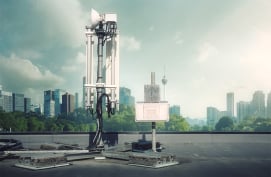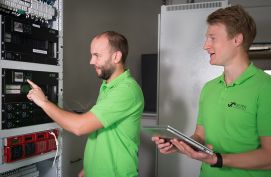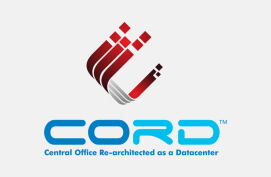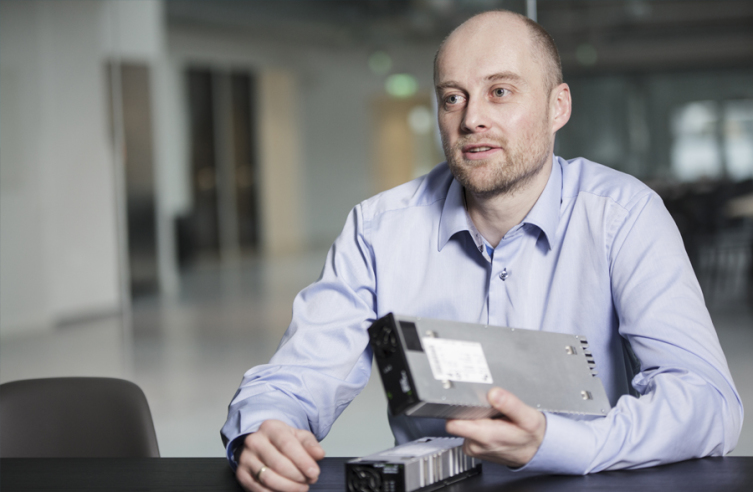
Power expert Bjørn Håvard Stokke comments on pros and cons of feeding DC power from a central site, rather than doing the AC/DC conversion at the point-of-use.
The pros and cons of HE remote power. Power expert Bjørn explains.
It’s a never-ending story. More traffic, heavier traffic. More and more bandwidth is required – networks must be expanded both when it comes to capacity and reach. Consequently, more equipment is needed closer to the end users. And more power is required...
The question is: What is the best way to provide the required power? Traditionally, this has been done by deploying a power system at each DSLAM (or 4G/LTE RRU) including batteries and mains feed. But there is a different approach, with many advantages.
The power of HVDC...
If you need to power a DSLAM up to 5000 meters away from an existing backed up power system, a HVDC remote power solution is the way to go. This is the “old” central office-to remote site model, but with a major difference: The power transmission takes place via dedicated power cables, with a minimum total cost of ownership compared to traditional remote power or with remote grid connections.
This is how it works: When rolling out a fiber network, add a power cable alongside the fiber cable. Add a DC-DC converter at the central power system end to step up voltage to 380 VDC, transmit via the cable, add a DC/DC converter to step voltage back down, before feeding the DSLAM.
Also for wireless…
The solution is also very suitable in wireless networks when RRUs are added for increased bandwidth and the distance is too long for 48 VDC. The same goes for installations where it is impractical to have the power system next to the telecom equipment (mountains, ski resorts, etc.).
A smarter way to power expansion of your telecom network
Bjørn Håvard Stokke, Product Manager for Eltek's portfolio of remote solutions
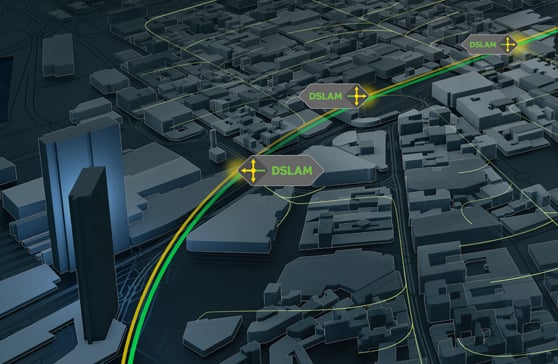
With an HE Remote Power Solution, feeding HVDC from a central site, the amount of equipment needed at the individual DSLAM is greatly reduced. There is no longer need for local grid connections or complete power systems with battery backup,
Why HVDC remote power is smart
There are several reasons why an HE Remote Power System is an attractive option. First of all, the total amount of equipment will be reduced. Less equipment means less complexity means less maintenance – or to put it simpler: it costs less to buy and less to maintain and less to operate, compared to a solution with local power systems, including batteries.
So in terms of cost, complexity and reliability, a HVDC power solution is a very good proposition indeed.
Things to consider
When evaluating an HE remote power solution versus a traditional solution, some of the main parameters to consider are the initial and operational costs of the local AC feed, added complexity due to local batteries and the power system itself in a traditional solution; versus the costs of the power cable and converters in a HVDC solution.
There are of course other technical and practical issues to consider, such as the power requirements at the remote sites, the distance from the central office, national regulations, and so on. But provided you plan for a power cable to be laid down with the fiber, my experience is that the HVDC feed solution, in most cases, will come out clearly on top.
The future of remote power
With continued network growth, there is a strong case for a DC feed from a central system to the remote installations. A significant part of the network growth will take place within wireless, powered more and more by HVDC.
